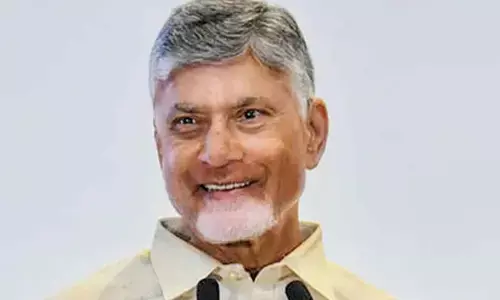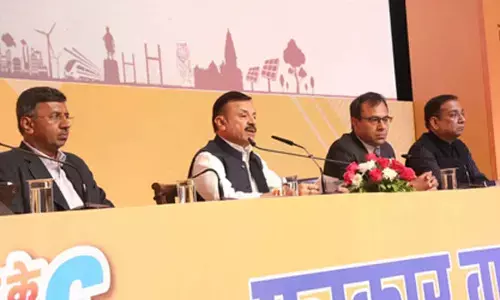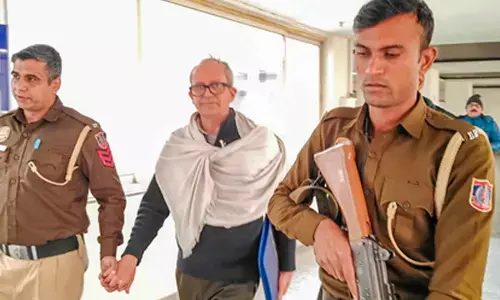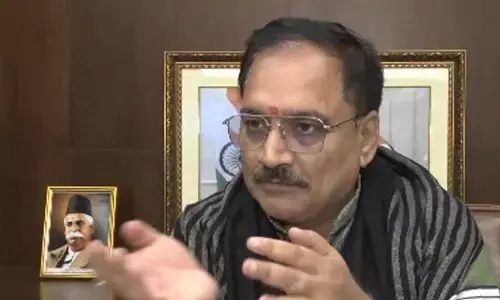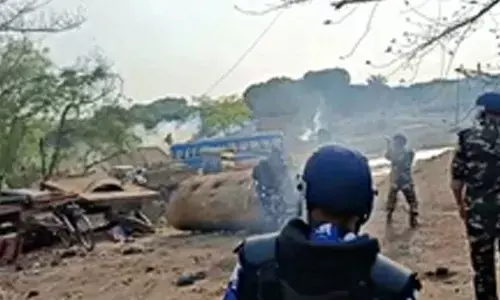Mumbai needs enforcement of building safety norms: Experts on Dongri building collapse

Every year, the financial capital sees instances of building collapse, foot overbridge accidents and other life-threatening but preventable incidents.
MUMBAI: The collapse of a residential building Tuesday in the congested Dongri area has once again put the focus on Mumbai's stressed infrastructure with experts and realtors calling for strict enforcement of safety norms and regular audits to avoid such tragedies in the future.
Every year, the financial capital sees instances of building collapse, foot overbridge accidents and other life-threatening but preventable incidents.
The situation gets aggravated during the monsoon.
The four-storey residential structure in Dongri in south Mumbai caved in shortly before noon, killing at least 11 people and trapping more than 40 people under the debris, civic officials said.
This was the latest addition in the list of such tragedies in the Mumbai metropolitan area which is replete with tales of sheer negligence and apathy by authorities tasked with overseeing development and maintenance of buildings and infrastructure assets.
"Mumbai needs to urgently work on strengthening existing infrastructure even as it goes in for new infrastructure development," said Niranjan Hiranandani, president of Naredco, a national body of real estate developers.
Earlier this month, the city witnessed instances of wall collapse caused by the worst monsoon rains in a single day in 14 years, killing over 20 people.
Mumbai had received a record-breaking 400 mm of rainfall on the night of July 1, disrupting rail, road and air traffic and prompting officials to shut schools the next day.
In another incident, three people died when a school wall collapsed in Kalyan, 42km north of Mumbai.
Besides, around 200 metres of an internal road in the area caved in, forcing 100 families to vacate two residential buildings.
"The instances of deaths caused by building collapses during monsoons have now become frequent in the last few years."
"Unfortunately, people continue to die, and India has so far failed to strictly enforce safety norms for high-rises in the country," said Ramesh Nair, CEO and Country Head, JLL India, a global real estate services firm.
"As opposed to the scenario witnessed in more developed countries, India lags on implementing tighter norms for the structural and fire safety for all kinds of buildings," said Nair.
He said a large section of the real estate development fraternity is now aware of these guidelines and follows necessary construction norms relating to natural disasters such as earthquake, water, fire and floods to make safer structures.
"However, there remains a section of unorganised builders who continue to flout structural safety norms. Law should strictly deal with them," Nair maintained.
At least six people were killed and 32 injured when a major portion of a foot overbridge near the Chhatrapati Shivaji Maharaj Terminus (CSMT) railway station in south Mumbai collapsed in March.
In July last year, the pedestrian section of the Gokhale bridge in suburban Andheri gave way, killing two persons and injuring three others.
"The basic requirement is to decongest existing overcrowded urban spaces by creating new cities in periphery areas with mass rapid transport linkages to the CBDs (central business districts), which will provide breathing space for overburdened and overworked infrastructure."
"We need to promote the idea of planned suburbs on the periphery of Mumbai to de-congest existing infrastructure and ensure ease of mobility," Hiranandani added.
After every such a tragic incident, it is often seen that government agencies like the BMC, Mhada and Railways engage in a blame game and pass the buck.
Mumbai Grahak Panchayat chairman Shirish Deshpande said such incidents are not a matter of blame game and there is an urgent need to look at them very seriously.
Every year before the monsoon, Mhada (Maharashtra Housing and Area Development Authority) and BMC (Brihanmumbai Municipal Corporation) released a list of dilapidated and dangerous buildings and issue eviction notices to occupants.
"But while doing so, they do not take into consideration where will the tenants go. We cannot continue living with this and passing the blame."
"With RERA (Real Estate Regulatory Authority) in place, we have asked the authorities from Mhada and the government to sit together and create a regulatory framework for redeveloping such structures in a time-bound manner," Deshpande added.
Ramesh Prabhu, founder-chairman, Maharashtra Societies Welfare Association, said the current infrastructure in Mumbai is not capable enough to hold the burgeoning population.
"On one hand we cannot stop the influx and on the other hand, we are unable to provide adequate infrastructure and housing. This has resulted in mushrooming of slums," he said.
At the same time, there is no proper assessment or structural audits of the existing establishments, Prabhu said.
It is necessary for the government to take proactive steps in this regard or else such incidents will continue to recur with fatal consequences, he warned.
Prabhu said the state government, in a July 4 order, has asked the authorities to give priority to redevelopment to buildings which are declared dangerous for settlement.
"We now need to see how this is implemented," he said.











